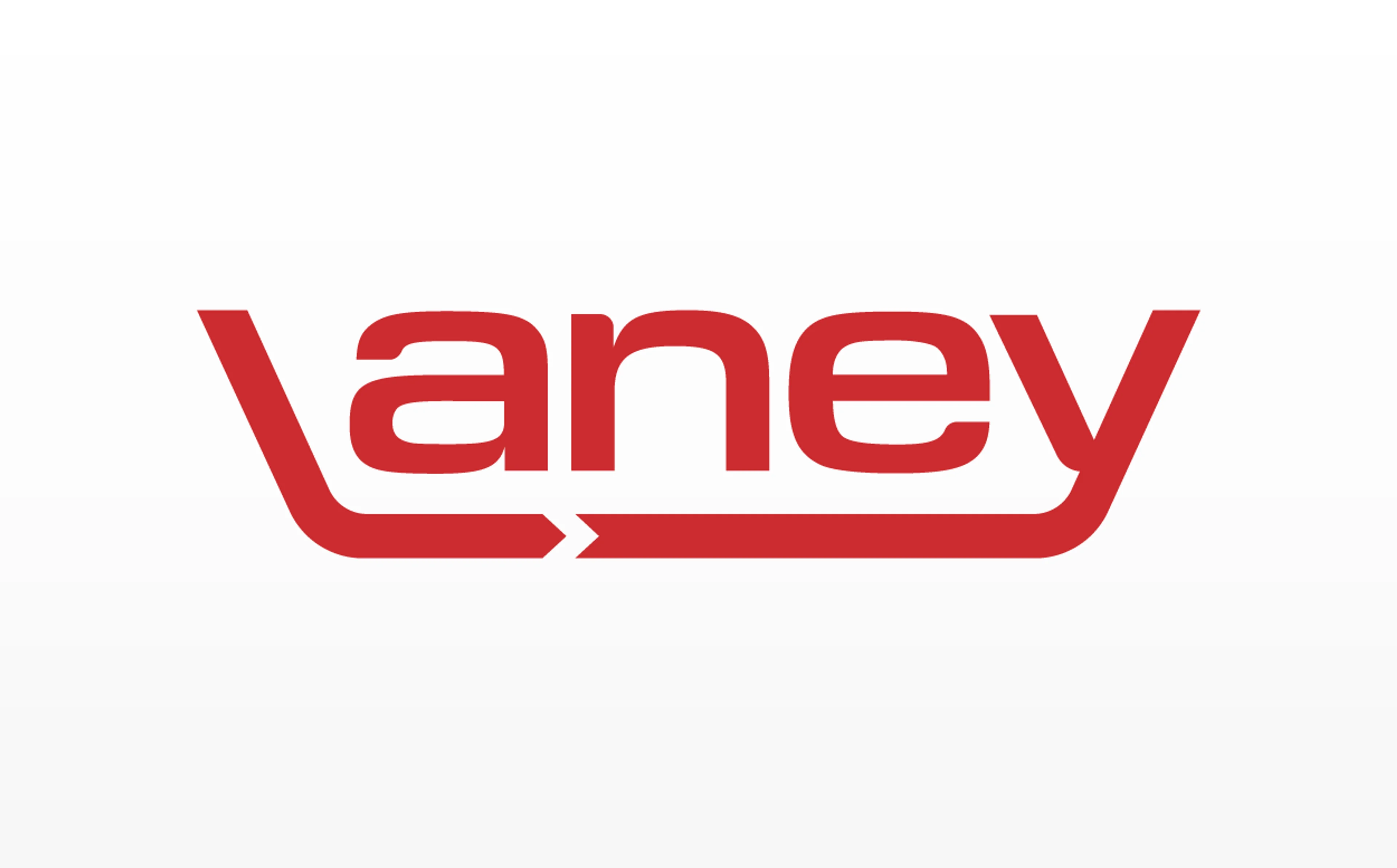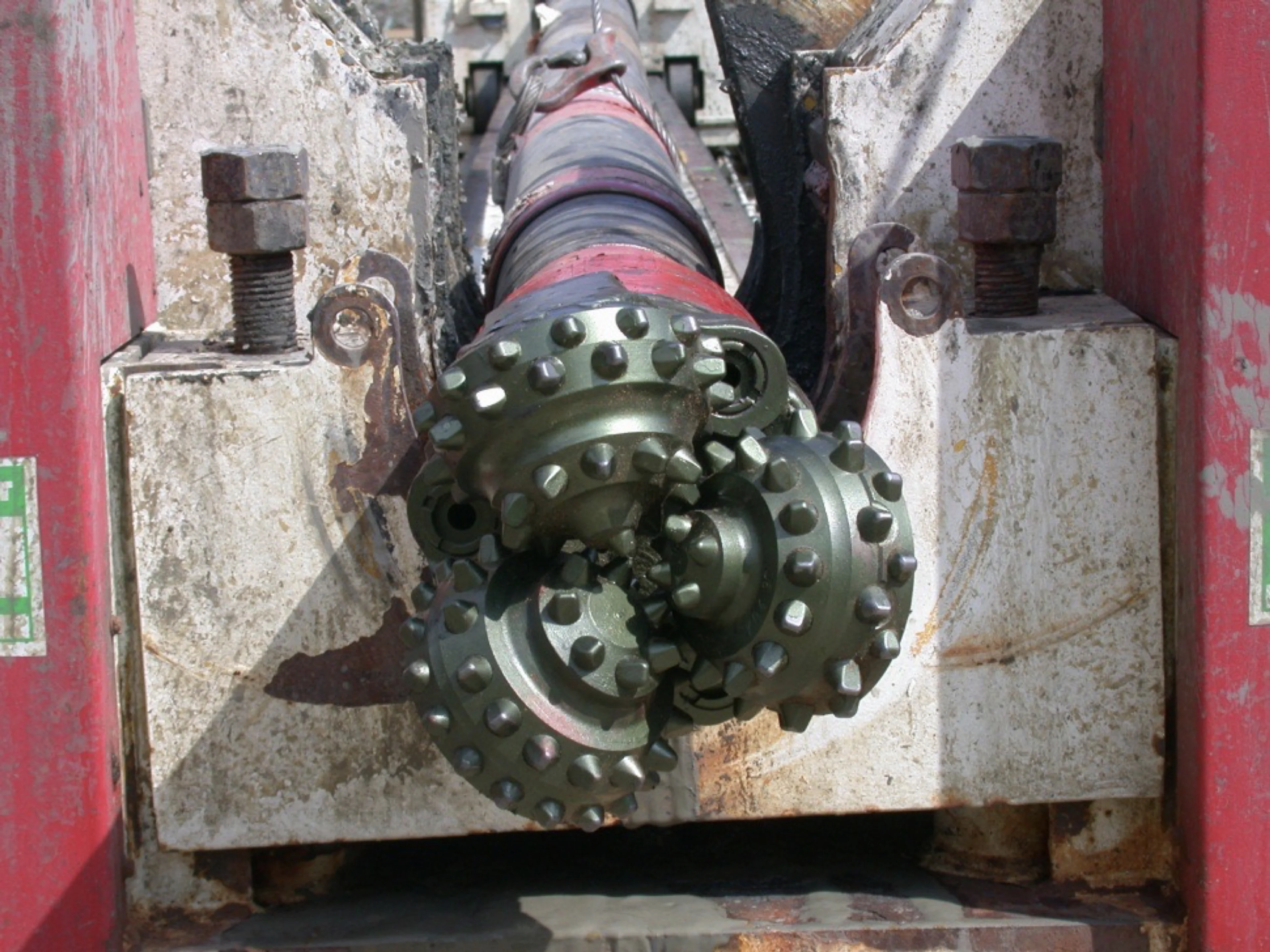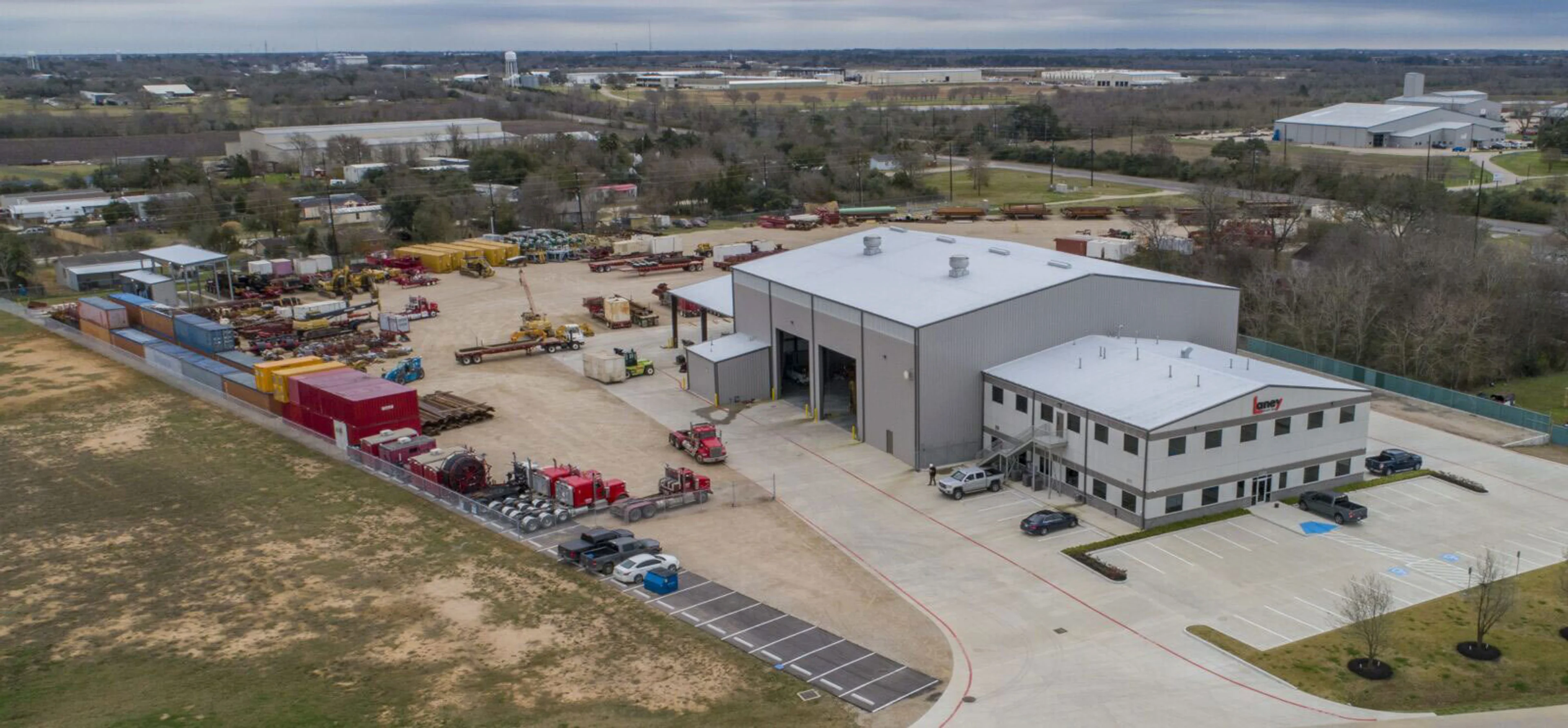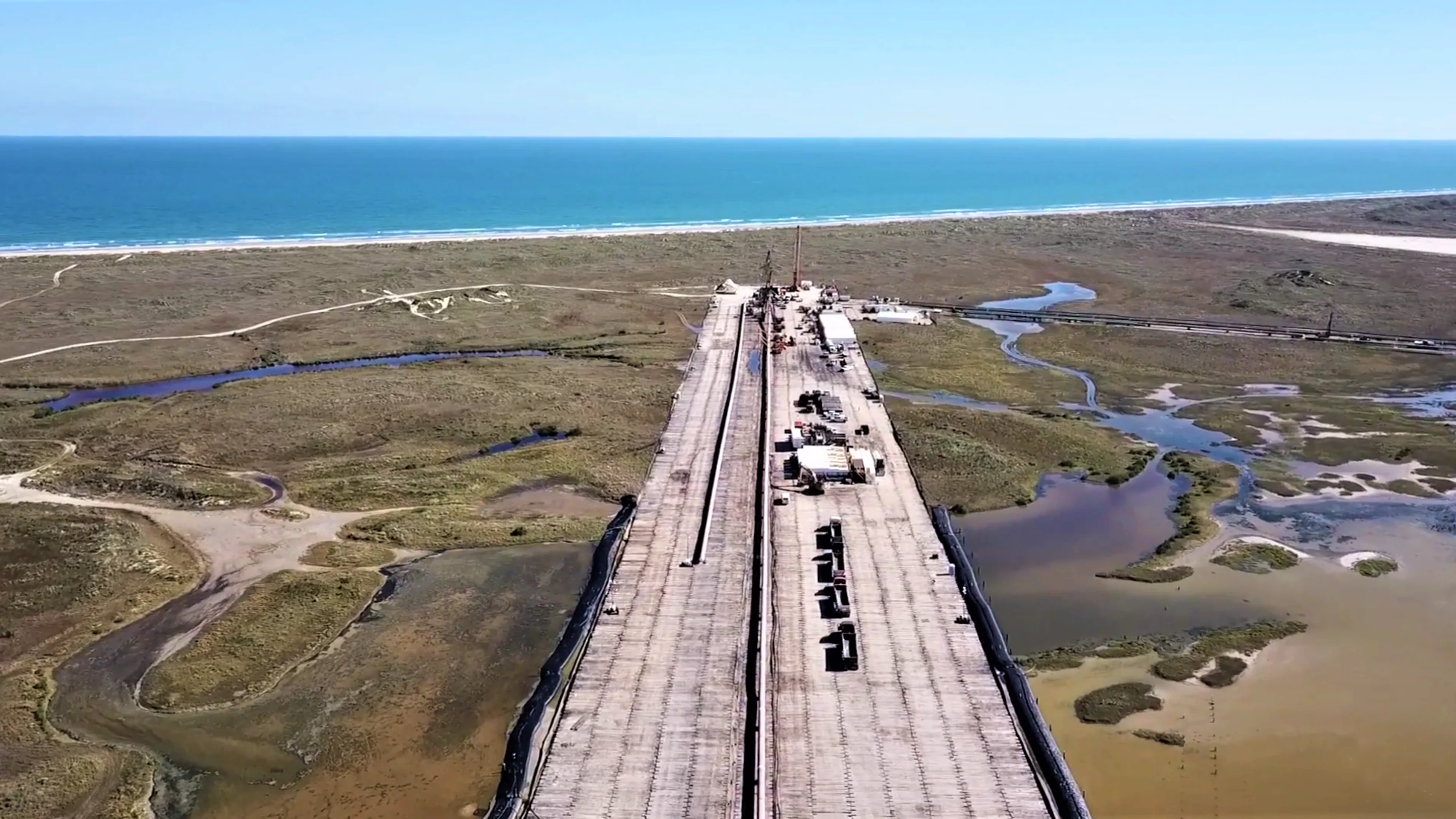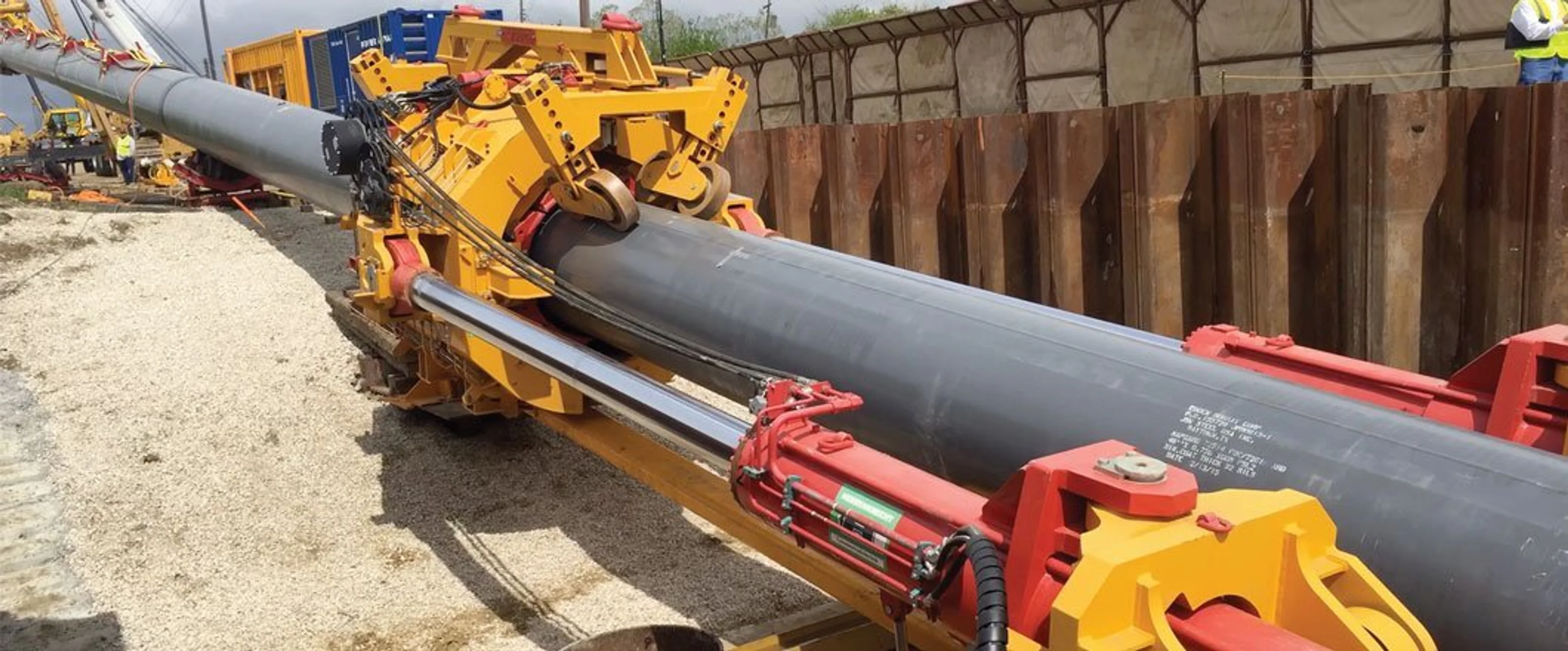
Direct Pipe was developed to provide another tool in the toolbox of trenchless pipeline installation industry. It was not intended to replace horizontal directional drilling (HDD), but as an alternative installation method for projects with specific site conditions where HDD is either not possible, risky, or impractical. Direct Pipe is not a panacea or a solution for every site or site condition; however, it could be the right solution for many projects.
The Direct Pipe is sometimes described as a combination of HDD and microtunneling, although it has little in common with HDD, with the exception of a similar curved profile. Direct Pipe is typically a near-surface or surface launched, single-pass, curved microtunnel installed using a modified microtunnel boring machine (MTBM).
The steel installation pipe (casing pipe or product pipe) is advanced through the designed profile using a hydraulic pipe thruster assembly. The MTBM is equipped with articulated joints connected to internal hydraulic rams to provide the steering capability as the installation pipe is thrust forward. This allows the pipe to be installed in both vertical and horizontal curves, similar to what is possible with HDD. Like microtunneling, the hole is continuously supported during installation.
History and innovations of direct pipe
Developed by Herrenknecht, AG in the early 2000s, the first Direct Pipe installation was completed in 2007 as a 48-in. diameter casing under the Rhine River. Since the first installation, nearly 200 Direct Pipe installations have been completed worldwide and more than 50 have been completed in North America. Since its development, other similar surface-launched steerable microtunneling techniques have been developed or are in development, but Direct Pipe remains the most widely used.
Herrenknecht continues to make innovations and refinements to the process. With the incorporation of the proprietary jet pump from Herrenknecht’s E-Power Pipe technology, the smallest Direct Pipe MTBM diameter was reduced to 28 in. Two successful 28-in. diameter installations were completed in Poland in 2021. Herrenknecht have also modified the MTBM seals on some of the machines to allow for installations deeper than about 100 ft (3 bar).

U.S. and Canadian markets
Even though the first several Direct Pipe installations in North America were in the United States, over the last several years, more installations have been completed in Canada. Reasons for the increase in use in Canada are varied but include difficult subsurface conditions for HDD and endorsement by a few owner companies who believed Direct Pipe risks were less than HDD.
The reasons for the relative decrease in use in the United States are equally varied, but include perceived added cost, higher owner tolerance for HDD risks, diameter limitations, and more favorable subsurface conditions for HDD, particularly in the southern half of the country.
Direct Pipe has several significant limitations, perceived or real, that have typically limited its use worldwide, but particularly in the United States. Primary of these is the unit cost of installation. Direct Pipe can be more expensive than HDD on a unit length basis for subsurface conditions favorable for HDD. In difficult subsurface conditions where HDD is not well suited, the cost of a Direct Pipe installation may be less than costs associated with HDD attempts, which may even be unsuccessful.

Suitable vs. unsuitable conditions
There are conditions where Direct Pipe is well suited or even the only trenchless solution for pipeline installation. These conditions include pipeline installations under-regulated levees where hydraulic fracture is prohibited and in subsurface conditions which include a significant amount of coarse gravel and cobbles.
For pipeline installations under levees, which are under the jurisdiction of the United States Army Corps of Engineers (USACE) or other levee owners, Direct Pipe can provide advantages over HDD. These permitting agencies require an engineering evaluation of the risk of hydraulic fracture and the potential for damage to the levee foundation’s soils. Under the new guidelines for pipeline crossings under levees, the USACE requirements are such that a pipeline installed by HDD must penetrate a competent cohesionless soil in order to be protective of the levee foundation soils (USACE 2020). If a competent soil layer is not present, Direct Pipe could be the only viable solution because, in Direct Pipe, the fluid pressures experienced by the soil are only slightly higher than hydrostatic. This reduction in fluid pressure and associated hydraulic fracture risk makes Direct Pipe an ideal solution for crossings of levees.
Direct Pipe is less sensitive to gravel and cobbles as they can be ingested and crushed before being transported through the slurry return line. Direct Pipe is also able to ingest boulders up to about one-third of the face diameter.
Other advantages of Direct Pipe include continually supported hole, flexible workspace and stringing area, and shallow depth of cover requirements. Because the tunnel is always supported by the MTBM or thrust pipe, hole instabilities are not typically an issue. While the workspace should be as long as practical to reduce installation durations, the stringing area can be as short as 40 ft. The design depth of a Direct Pipe installation can be shallower, and the associated length can be shorter when compared to HDD because the risk of hydraulic fracture is less.
For all of its advantages, Direct Pipe is not the best solution for every project and has some significant limitations. Because it is surface-launched and the profile is typically curved, Direct Pipe is best suited for pressure pipe and is not well suited for gravity systems. Direct Pipe is currently limited to thrust pipe diameters between 28 and 60 in. For smaller pipes, a casing would have to be installed and the product pipe installed inside the casing. Although there are a few exceptions, Direct Pipe is typically limited to welded steel pipe.
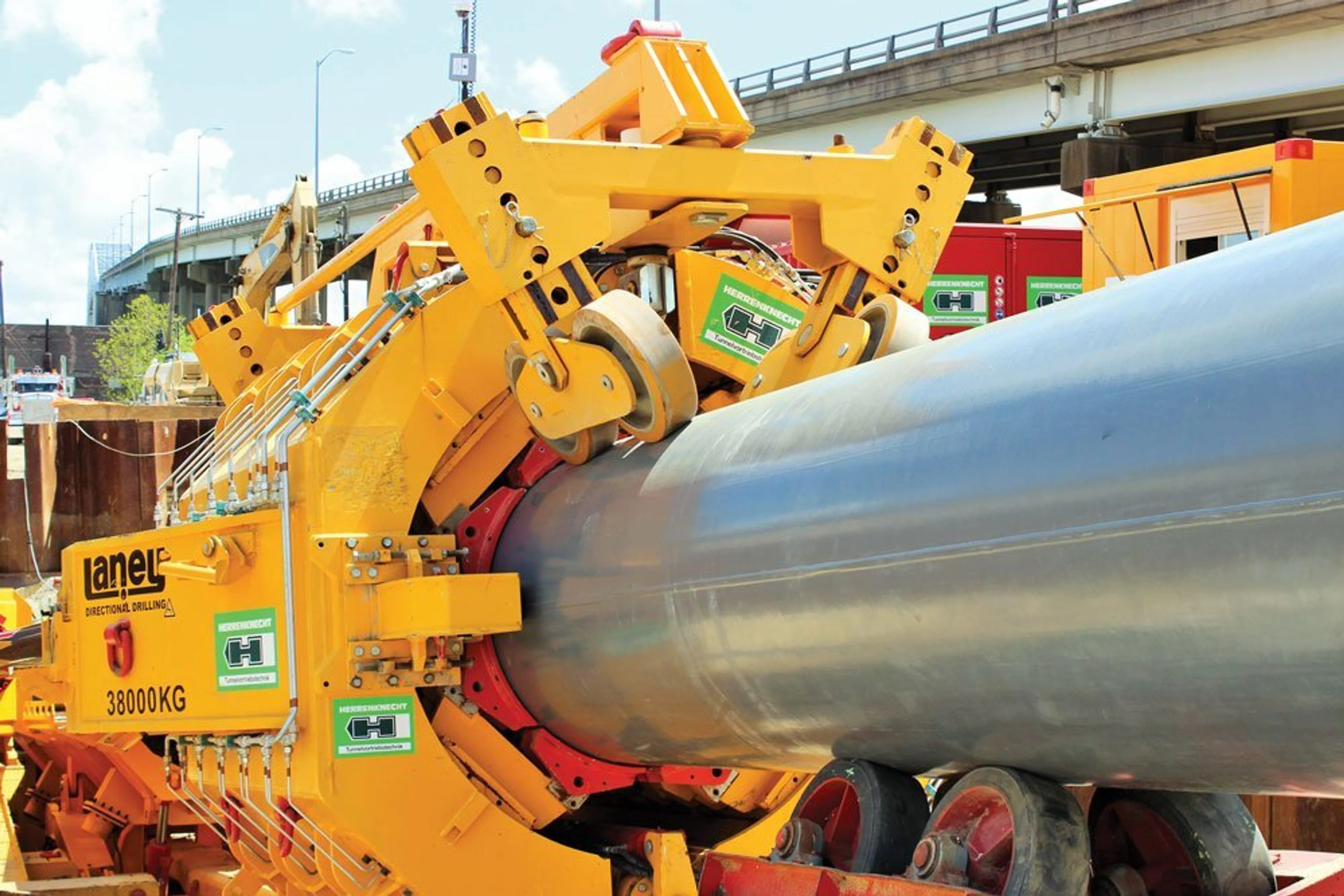
Conclusions
Direct Pipe will never be a replacement for HDD for trenchless pipeline installations; however, it can be an appropriate solution where HDD is not possible or high risk. The use of Direct Pipe should be evaluated by a qualified trenchless engineer and selected after a thorough cost/benefit evaluation has been completed.
References
U.S. Army Corps of Engineers (USACE). (2020). “Conduits, Pipes, and Culverts Associated with Dams and Levee Systems” EM 1110-2-2902, Washington DC.
Andrew E. Sparks, P.E. is director of engineering at Laney Directional Drilling. Robert D. Hotz II, P.E., is vice president-commercial at Laney Directional Drilling.
